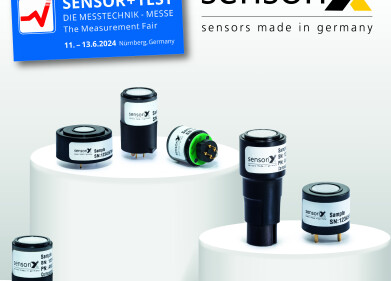Gas Detection
Fast, reliable detection of O2, H2S or CO
Apr 08 2010
Draeger (Germany) is expanding its family of single gas detectors with the launch of the Draeger Pac 3500 and Draeger Pac 5500. Designed for personal protection and ideal for use in oil and gas, chemical, power generation, steel, water and other general industrial applications, these compact gas detectors measure the concentration of oxygen, carbon monoxide or hydrogen sulphide in the air. Both instruments use minimal battery power and, because they have low maintenance requirements, offer a low cost of ownership.
The Draeger Pac 3500 has a lifespan of approximately two years and the Draeger Pac 5500 has an indefinite lifespan with proper maintenance and servicing. Both units feature the same powerful Draeger detection technology.
The integrated Draeger XXS sensors offer an expected lifespan of five to eight years. The same is true of the oxygen sensor, which operates consumption-free and has been produced lead-free. The triple electrode technology on which it is based has been patented and prevents early sensor wear. The battery and filter of the Draeger Pac 3500 can be replaced while the sensor does not have to be changed over the complete instrument life. The battery, sensor and filter of the Draeger Pac 5500 can be easily replaced without the need for special tools.
The Draeger Pac 3500 and the Draeger Pac 5500 allow the gas to enter the sensor from several directions. This reduces the risk of an accidentally covered inlet preventing access to the sensor for measurement. The sensors detect the gases quickly and reliably. When used to detect hydrogen sulphide, the instrument indicates measurements with one decimal point and, as a result, is ideal for low warning thresholds and reduced limit values.
Featuring a short response time, both instruments are quick to generate visual, acoustic and vibrating alarms during a hazardous situation.
Used to test instrument function, the Draeger Bump Test Station operates without a power supply. This means that the mandatory daily tests
can be carried out on-site and without undue delay to the work process – even when large numbers of instruments are involved. The optional test for each instrument takes eight to fifteen seconds, ensuring quick, easy testing.
The user-programmable bump test and calibration intervals mean that the detectors can be configured to stop automatically after an adjustable tolerance period if the user ignores the request for a bump test. The same applies to the (non-)observance of regular service and calibration intervals in the workshop.
Digital Edition
IET 34.2 March 2024
April 2024
Gas Detection - Biogas batch fermentation system for laboratory use with automatic gas analysis in real time Water/Wastewater - Upcycling sensors for sustainable nature management - Prist...
View all digital editions
Events
May 13 2024 Munich, Germany
May 15 2024 Lund, Sweden
May 15 2024 Frankurt-am-Main, Germany
May 20 2024 Columbus, OH, USA
May 21 2024 Lagos, Nigeria

_2.jpg)
















